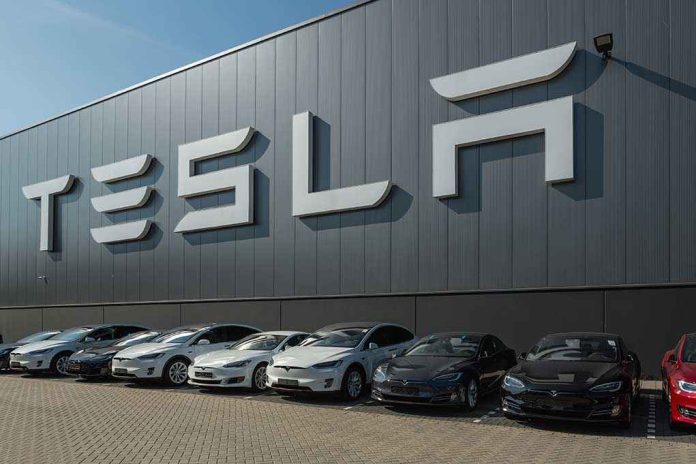
A Texas family is suing Tesla after Michael Sheehan burned to death inside his Cybertruck, unable to escape when the futuristic vehicle’s electronic doors failed to open after a crash, highlighting potential fatal design flaws in Elon Musk’s signature vehicle.
Key Takeaways
- Michael Sheehan died on August 5, 2024, after his Tesla Cybertruck crashed into a ditch in Baytown, Texas, caught fire, and he was unable to escape the vehicle.
- The lawsuit alleges Tesla’s Cybertruck has a “defectively designed” battery prone to thermal runaway and electronic doors that trap occupants when power is lost.
- This is one of multiple fatal Cybertruck incidents, including a California crash that killed three college students, raising significant concerns about the vehicle’s safety design.
- The Sheehan family is seeking over $1 million in damages, claiming Tesla failed to provide adequate warnings or exit training for emergency situations.
- The Cybertruck has already faced multiple recalls for issues including faulty acceleration pedals and detachable exterior panels.
Fatal Design Flaws at Center of Lawsuit
The family of Michael Sheehan has filed a lawsuit against Tesla following his death in a Cybertruck accident on August 5, 2024, in Baytown, Texas. The lawsuit alleges that after Sheehan drove into a ditch, his vehicle caught fire, and he was unable to escape due to fundamental design flaws in the Cybertruck. According to court documents, the vehicle’s power-dependent electronic door system failed when it was most critically needed, leaving Sheehan trapped inside the burning vehicle with no emergency exit mechanism.
“At some point the sexiness of the spacecraft design, with the sleek and hidden handles, all that gives way to safety components,” said Scott West, attorney for the Sheehan family.
The lawsuit specifically targets Tesla for selling what they describe as a “defectively designed” vehicle with batteries prone to thermal runaway. The Sheehan family claims Tesla failed to provide adequate warnings about the risk of entrapment when power is lost and did not offer sufficient training on emergency exit procedures. Their legal counsel, Scott West, has extensive experience in automotive product safety litigation and emphasizes that form should never supersede function when it comes to vehicle safety mechanisms.
Pattern of Safety Concerns Emerging
The Sheehan case is not an isolated incident involving Tesla’s Cybertruck. A similar tragedy occurred in California when three college students died in a Cybertruck fire, with only one survivor. The family of Krysta Tsukahara, one of the victims in the California incident, has also filed a lawsuit against Tesla. These cases highlight a troubling pattern of safety concerns surrounding the vehicle’s design and vulnerability to fires, which some critics claim exceed even the notorious Ford Pinto in terms of fire fatality rates.
“This isn’t the first lawsuit that Tesla has faced over a fatal crash while their vehicle was in use,” said Scott West, attorney for the Sheehan family
Beyond these fatal incidents, the Cybertruck has been subject to multiple recalls since its release. These recalls have addressed serious safety issues including faulty acceleration pedals and detachable exterior panels that could create hazards for other drivers. The California Highway Patrol is still investigating the Piedmont crash, and the exact cause of the fires in both incidents remains unclear, though the lawsuits point to the battery system as the likely culprit.
Legal and Regulatory Implications
The Sheehan family is seeking over $1 million in damages from Tesla, alleging negligence in design and manufacturing, failure to provide adequate warnings, and gross negligence in selling a vehicle with known safety defects. The lawsuit also names The Barn Whiskey Bar in Mont Belvieu as a defendant, claiming the establishment over-served Sheehan alcohol prior to the accident. This additional claim complicates the case but doesn’t diminish the serious allegations against Tesla regarding the vehicle’s design flaws.
These lawsuits come at a challenging time for Tesla, as the company faces increasing regulatory scrutiny over its vehicle safety features and marketing claims. While Tesla has revolutionized the electric vehicle market, critics argue that the company’s aggressive pursuit of futuristic design elements and technological innovation may sometimes come at the expense of basic safety principles. The outcome of these cases could have far-reaching implications for Tesla’s design approach and for automotive safety standards throughout the industry.





